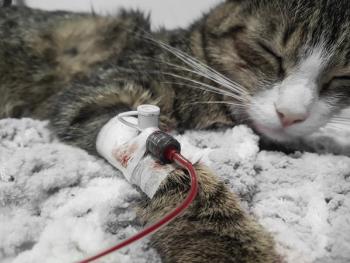
Trends in Pet Food, Treat Purchases
Online sales are transforming the pet food industry, but pet owners are not yet ready to abandon retail locations.
Spending on pet products, services, and food is expected to reach an all-time high of $72 billion this year. One area that is showing particularly impressive gains is the pet food sector, with food and treats accounting for $32.7 billion in spending over the past year. This represents a 5% increase ($1.5 billion) over 2016, according to recent
In addition to the increasing number of pet owners in the country—nearly
“As with the human food and beverage industries, product assortment and fulfillment options across the pet industry have exploded as consumers have shifted how they shop for their furry companions,” the Nielsen reports reads.
Choosing Quality Over Quantity
And while the Nielsen report indicates that the total amount of food being sold has dipped slightly, experts believe the increase in overall sales can be linked to pet owners selecting premium products for their pets. Sales of wet food, in particular, grew by 4.7% and the segments for “natural” and “free from artificial colors” foods increased 43% and 27%, respectively.
This correlation is in line with a 2019 trend report that predicts pet owners will continue to become much more cognizant of the types of foods they feed their cats and dogs. A
Not only has the trend toward choosing healthier pet foods affected how manufacturers market their products, it has also had a direct impact on what retailers choose to sell. In an unprecedented move last month,
Brick-and-Mortar Remains Primary Pet Food Source
Even with the significant uptick in online sales, brick-and-mortar locations maintain a stronghold on the pet consumables market, comprising nearly 50% ($16 billion) of annual sales. According to Nielsen’s Digital Shopping Fundamentals research, 1 in 2 pet owners indicate that they don’t ever intend to buy pet products online. These findings indicate the while growth among big-box retailers has slowed, retailers must cultivate an omnichannel presence to succeed in the marketplace.
Pet Food Sales Decrease in Vet Hospitals
One area that did see a notable decrease in prescription pet food sales was veterinary clinics. The segment received $1.6 billion in sales across pet consumables this year, a 6% drop from the prior year. According to Nielsen, pet food volume sales (which totaled 393 million pounds) has declined by more than 8% in veterinary hospitals. The research also found a decline across almost all prescription pet food and treats, with more pet owners likely turning to the internet for support or filling their prescriptions online rather than directly with their pet’s veterinarian.
Newsletter
From exam room tips to practice management insights, get trusted veterinary news delivered straight to your inbox—subscribe to dvm360.




